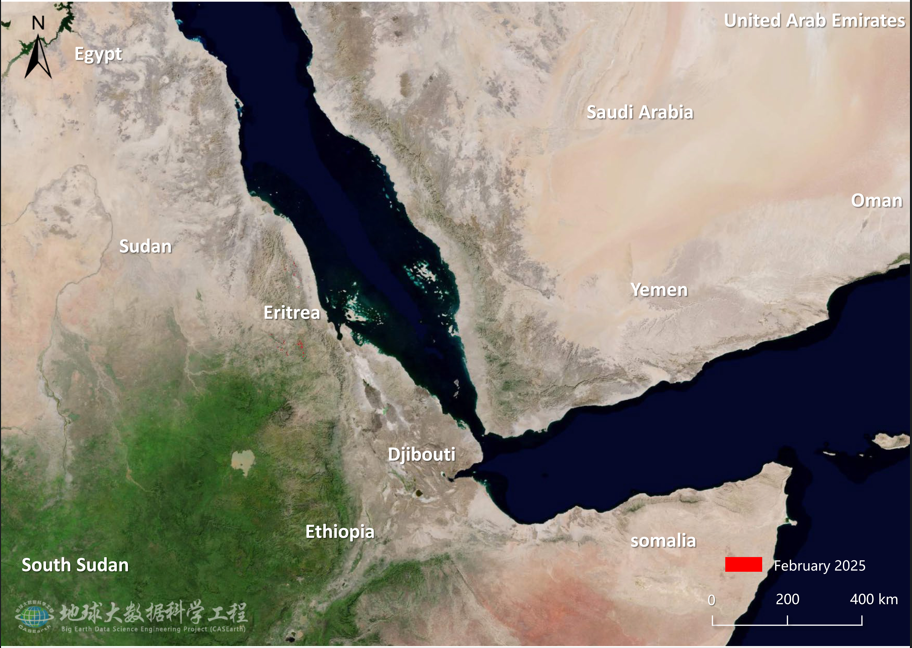Contact Information

Desert Locust Monitoring and Loss Assessment in Eritrea, Ethiopia and Saudi Arabia (February 2025)

Dataset Overview
In February 2025, the "Asian-African Desert Locust Monitoring and Assessment" working group under the Earth Big Data Project utilized MODIS satellite data, meteorological data, and pest forecasting models to conduct dynamic monitoring of desert locust infestations in Eritrea, Ethiopia, and Saudi Arabia. Remote sensing monitoring results showed that in February, desert locusts were mainly distributed in northern Red Sea coastal and central inland areas of Eritrea, northern and eastern regions of Ethiopia, and northern Red Sea coastal areas of Saudi Arabia, damaging vegetation areas of 18,500 hectares, 15,800 hectares, and 23,000 hectares respectively, causing varying degrees of damage to local farmland, grassland, and shrubland. Over the next two months, reduced rainfall in Eritrea will lead to dry conditions, causing locust numbers to decrease; eastern Ethiopia will experience a slight increase in locusts due to migration from northwestern Somalia; while locusts in Saudi Arabia's northern Red Sea coastal areas will migrate inland for spring breeding. As this period coincides with the main planting and growing season in Ethiopia and the main growing and harvesting season for food crops in Saudi Arabia, it is recommended to continuously monitor desert locust dynamics to prevent further damage to agricultural and pastoral production.

Dataset Details
Spatial Resolution:
Time Resolution:
Product Number: XDA19080304266
Create Institution: Big Earth Data Center, CAS
Created By: Dong Yingying
Creation Date: 2025-06-07 22:03:11
File Size: 1
Data Format: tiff
Type Of Data: 栅格
Data Label:
